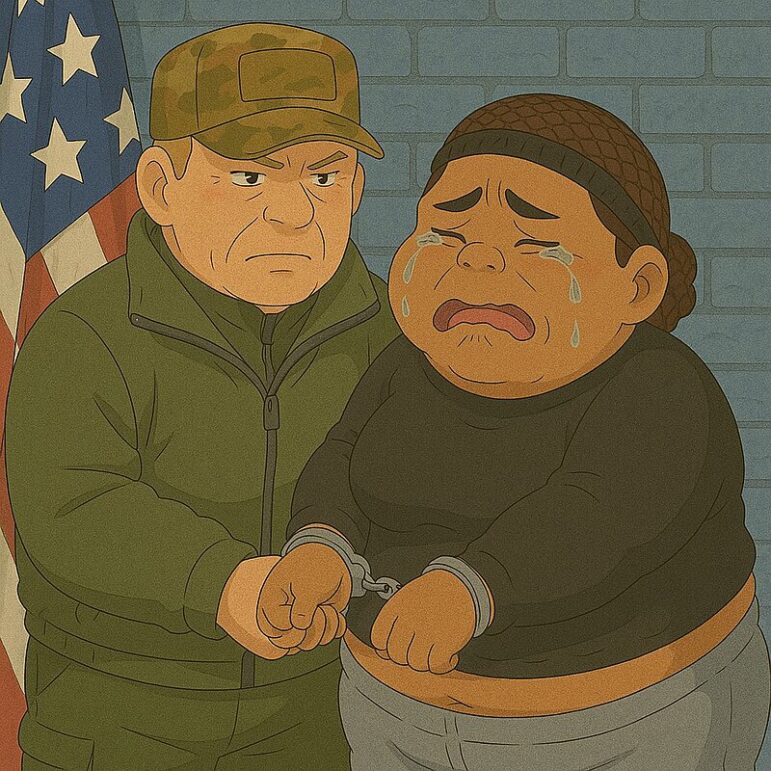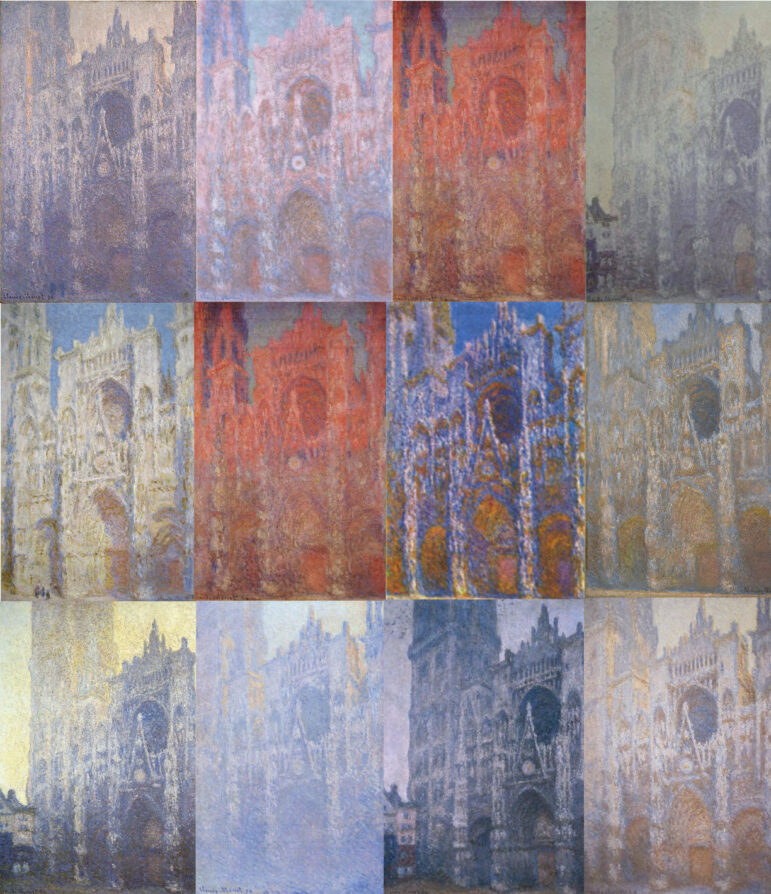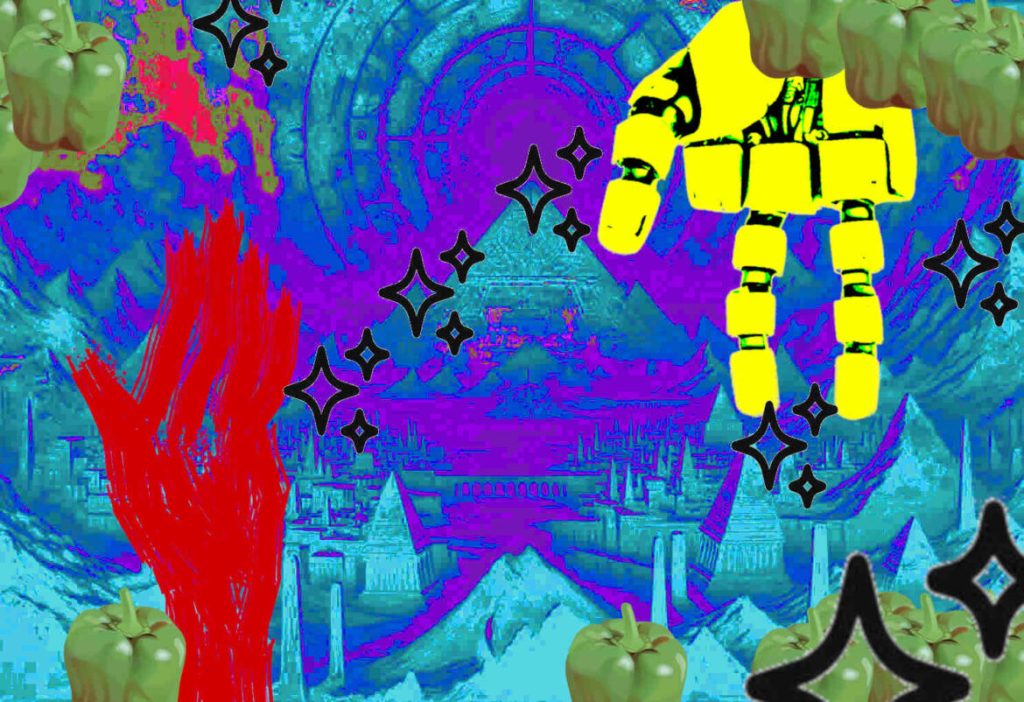
A couple of years ago, it must have been late 2021 or early 2022, someone I followed on social media started posting a ton of illustrations on his timeline. Each of the posts consisted of a small, low-resolution portrait accompanied by a short bit of text. The kicker was that the text was not a description of the picture; instead, the picture had been created by the words through the power of machine learning.
This was how I became aware of generative AI and AI art, and at the time, it all seemed like nothing more than a fun diversion. The pictures I saw were for the most part made to look as deformed as possible, and act as some kind of quick absurdist meme-ish entertainment. While I can’t remember those pictures anymore, they had been funny enough that I went to generate a few of them myself, and post them to some Pagan social media pages. There, those cheap-looking pixelated images resulted in quite a few laughs and were soon forgotten.
Then, a few months later, OpenAI released ChatGPT to the public, and it ushered a tech-craze unlike almost anything we had seen. For a while, AI was on everyone’s lips: advances were made at record speed, AI models sprouted left and right, new real-life applications were discovered and fortunes were made.
Since then, things seem to have calmed down somewhat, but no one can deny that AI has irremediably become part the global societal discourse, and, to some extent, the daily life of millions. Although most of the people using AI utilize the tech mainly for very basic tasks such as writing emails, organizing their files, or using it as a search engine, AI use has become significantly more conspicuous when it comes to visual media.

Ai images generated by the author in 2021 or 2022
Everywhere on social media, you can barely spend a hot minute online without being bombarded with obvious AI-visuals and creations. From fake movie trailers to stock photo-ish illustrations, this stuff is unavoidable. While the vast majority of the time, this is made purely for laughs, or as an afterthought, as a way to prop up a post and garner more engagement, in some cases, the use of AI illustrations can be far less benign.
Many are already aware, for instance, of how an AI-generated (later human-edited) image won a prize at the Colorado State Fair yearly art competition back in 2022, or how, just last year, Google’s GeminiAI received backlash for its racial bias in images it generated.
More recently, the Swedish historical museum in Stockholm was sharply criticized for its (privately and externally produced) exhibition about the Swedish witch-hunts, the bulk of which consisting of generated AI portraits of what were supposed to be witches
So yes, AI art can be pretty sucky at times. Its ability to approximate reality varies widely, its uses can lead to loss of effective employment opportunities for artists, its abundance has led to a significant homogenization of certain aesthetics, and to boot, it is very resource and energy-intensive.
While these criticisms are well-warranted, you will say, what do they have to do with Paganism? To which I will answer: more than you would think at first glance.
I would even go further: in my opinion, the rise, rapid development, and adoption of AI-generated art poses an existential question which goes beyond base issues about power consumption, mass-media trends, and even copyright law. AI art is, I truly believe, challenging what it means to be human, what we can aspire to be, and the nature of existence beyond the realm of material reality.

An AI illustration generated in the style of the Japanese animation studio Ghibli on the 27th of March 2025.
To explain all that, we should probably first acknowledge one thing: although this might be an uncomfortable thought for some, AI art has become virtually indistinguishable from human art. That is a fact. I learned this last year when I took part in a survey designed to research people’s abilities to spot AI art, as well as measure their appreciation thereof. Although I fancy myself being a bit of an art aficionado (my high school major was art history), I only scored marginally better than the average responder and was even duped by quite a few pieces which, to me, were both near-certainly human-made but also looked like beautiful works of art. Try it for yourself if you like. (Give it at least 10 or 15 minutes, as there are 50 pictures to judge.)
This led me to a bit of a philosophical conundrum: if humans cannot differentiate any more between human and AI-made art, can one really argue that human-made art is anything special? Anything superior? More genuine? Truer, in a way? Imbued by some kind of soul, even?
Soul.
This is a word that is quite often flung around when discussing AI art.
People hostile to AI art often demean AI-generated images as being “soulless” while proponents of the tech tend to ridicule them by denying that there even is such a thing. For a while, I was wholeheartedly siding with those seeing AI art as being intrinsically shallow, plastic, a commodity not reflecting anything beyond the slightest of human input aggrandized through computational power.
This might have been true just two or three years ago, but as shown by the survey linked above, this is no longer the case. While most of the AI images you will find online do retain a certain grain that is easily identifiable, images generated by the more advanced AI models can take whichever form and style there is (even, starting just days ago, that of the much beloved animation studio Ghibli). Chances are that you might have seen some high-quality AI-generated image on your social media timeline not so long ago and were moved by what you saw, even if it had little to do with human creativity and artistic process. AI is omnipresent in many ways already, and often in ways we mere mortals cannot spot.
The question is: where do we go from here?
While AI art is already routinely used in more commercial visual ventures (advertising, publishing, gaming), it would be wrong to think that it will remain there and not seep into “higher” and more beloved forms of art. Some traditional visual artists, like the German painter Lioba Brückner, have already started involving AI into their creative process, if not by generating ready-made works but to create reference works.
And while for now, generative-AI has not been fully embraced by sectors such as film-making, it is just a question of time until it is. As I write these words, the release of Japan’s first AI-assisted animated series is mere days away. Will it be welcomed as a legitimate piece of art, or will it be decried as being soulless? And even if it is, what about the next one, released when the tech has been further perfected?
Sooner or later, AI art will either become so deeply integrated in the creative processes of human artists, or so advanced that it won’t be possible to dismiss it as being soulless or unable to elicit emotions, or even, as is already partially the case, to even identify it as AI.
To me, and I figure, to many others, this is a bit of a scary thought.
Beyond even the practical issues surrounding copyright, environment, originality, or employment, the fact that AI art might very well be able to resonate with us at a deeper, seminal level demands that we ask ourselves: every time we were moved by a work of art, may it be getting goosebumps from our favorite songs, tearing up watching our most beloved movies, or getting a lump in our throat re-reading our most treasured novels, were we merely affected by the form the art took, or did we feel that we had been touched by something greater, something spiritual, even?
For many, art and spirituality are deeply intertwined, and the boundaries between the two tend to be rather thin, especially within Pagan circles, to the point where one can hardly tell where the artistry ends and where spirituality starts. How many people were moved to investigate a Pagan or occult path as a result of experiencing powerful emotions through art? And, correspondingly, how many have been inspired to create art following a particularly strong spiritual experience?
Even I, someone who is definitely not the strongest believer out there, have felt, or thought I have felt something greater on some occasions, beholding works of art shaped by human hands. Would I have been where I am today if I had never stumbled upon BATHORY’s “One Rode to Asa Bay” ? What would I be as a person, if I never had gotten the chance to read the Iliad or the Odyssey?
These works of art, among uncountable others, cannot be dismissed as being only equal to their material form: they are the result of incredibly complex processes at the individual, technical, esthetic and societal levels that are so deeply intertwined and co-dependent that they become near unknowable. In a way, it is this unknown set of factors, mixed in the human drive and inspiration to make something out of it, that is at the heart of what art truly is.
This kind of both accidental and arbitrary array of variables leaves enough to the imagination to consider that, maybe, something more than human could sometimes be at play. You often see that in music, when musicians sometimes describe not coming up with riffs and melodies, but rather discovering them, as if they had always been out there in some kind of ethereal realm, or bands whose performance can often be described as being so intense as being the result of some kind of (generally nefarious) possession.
This line of thinking agrees well with a number of Pagan myths. In the Hávamál, for instance, we are told of how Óðinn obtained the mead of poetry, wholly divine in origin, and that a small amount of the hallowed drink fell down to earth, granting a handful of chosen ones towering skills and grace. Parallel to this tale, we are also told of the god’s self-sacrifice on the world tree, through which he seized the runes. Although some have seen the two narratives as wholly separate episodes, scholars such as Jan A. Kozák have argued that one could see the two as complementary: one being the description of a ritual, while the other would represent a sort of spirit journey.
If so, this could mean that the mead of poetry and the runes might symbolically stem from the same pool, and that the arcane knowledge at the heart of Óðinn’s might is intrinsically tied to the ecstatic powers of inspiration; ergo, magic, inspiration, poetry, art, and knowledge are all related and divine by nature. The words of the God, hanging from the tree, recounting his acquiring of the runes become even clearer: Óðinn does not merely describe the obtention of specific knowledge, but the unleashing of the dynamic might of inspiration itself:
Þa nam ec frǫvaz
oc froþr vera
oc vaxa oc vel hafaz.
orð mer af orði
orz leitaði
verc mer af verki
vercſ leitaþi.Then I began to mature
and be wise to rise and to thrive from a word, a word
sought another word for me from a deed, a deed
sought another deed for me(Hávamál 138. The Codex Regius of the Poetic Edda — Konungsbók eddukvæða: GKS 2365 4to. Digital edition by Guðvarður Már Gunnlaugsson, Haraldur Bernharðsson, and Vésteinn Ólason.
These words, which I have quoted before, resonate with me as deeply as any great work of art, and even my all-too secular mind can get behind this idea that maybe, inspiration is not just a question of brain cells, mathematical models and scientifically observable variants.
However, if or when AI art reaches the point where it becomes universally accepted as being able to move us, unleash feelings and even, dare I say, inspire us, where does that leave us? Would it not make the world a sadder, colder, emptier place? How could one truly believe in anything numinous, anything behind the base material world, when one of the most compelling argument for the existence of something, anything behind it, has just been shattered by algorithms powered by Nvidia GPUs?
Maybe, in the near future, we will see art go the way of artisan crafts. Most of the widely consumed art will be conceived by AI under the supervision of a handful of humans nearly entirely divorced from any kind of creative process, while human-made art will become rarer, less practical, suffer from limited reach and globally be seen like some old quaint trend or esthetic. How would such human-made art be valued in such a world? Will there still be people defending the idea that this type of art retains some sort of immanent inspiration – some kind of intangible yet very real link to spiritual realms forever inaccessible for our new machine overlords?
Could it be, somehow, that the inescapable rarification of human-made art will have some positive effects on both art and spirituality? After all, it is easy to decry mass-produced, low-quality AI art as “slop,” but let’s be honest, humans can be very proficient at making revolting slop as well. Maybe the advent of AI-generated mass media will act as some sort of winnowing, separating the grain from the shaft: it might, in some ways, liberate (human) artistic creation further than any previous technological leap witnessed so far, akin to the way photography indirectly resulted in the birth of impressionism and modern art as a whole.

An assemblage of paintings of the Rouen Cathedral by Claude Monet (public domain)
Finally, would it maybe be possible, too, that human-made art will become both more subversive, and sacralized? As opposed to being present in every facet of our daily lives, could human-made art retreat, somehow, into the bowels of the underground, and, as it becomes rarer, and under great pressure, turn into something of even higher value, like coal slowly turning into diamond? In a world where sub-cultures are ever so present, I have no doubt that a new, counter-cultural wave human-made art would have the potential to affect society in profound ways.
If these days a growing segment of gen-Z kids have become enamored by “retro” Y2K tech like cheap digital cameras, dumb-phones, Gameboys, and iPods, what would kids born and raised in a society where the vast majority of the art they are exposed to is AI-made? Don’t quote me on this, but it could be catalyst for recontextualization of human-made art as something even greater and more powerful than it is even currently understood to be today. In this context, maybe the practice and appreciation of human-made art will become ever-closer associated with the metaphysical and spiritual world. Will kids born in the early 22nd century unleash an art-fueled spiritual revolution against AI-powered tech-oligarchs?
As with just about anything I have written in this essay so far, I have no clue, and I don’t think I will be asking ChatGPT, Deepseek, Claude, or Grok about it anytime soon. The only thing I know is that, when I started writing this piece, I did so with a heavy heart, ready to capitulate to AI, and have everything I have ever loved debased, trivialized, disrespected and dispossessed of what made it special. Now, I feel more at peace.
Will we be able to stop AI art at this point in time? No, we have crossed this river a while back. This, however, does not mean that human-made art, the place it occupies in our lives and the spiritual power it possesses, will go away anytime soon. To quote a beloved work of (human-made) art from my childhood, “life finds a way,” and so will art, and the intangible powers it channels.
So bring it on, AI ! Humans, their art, and their Gods are not going to go anywhere, whatever happens. While we wait to see exactly how deeply our world will be changed by this new technology, why don’t we pass the time with musical instruments, pencils, brushes, hammers and chisels in our hands? No one knows what they are capable of, the only way to find out is to try.
Disclaimer: No generative AI was used in the writing of this article.

